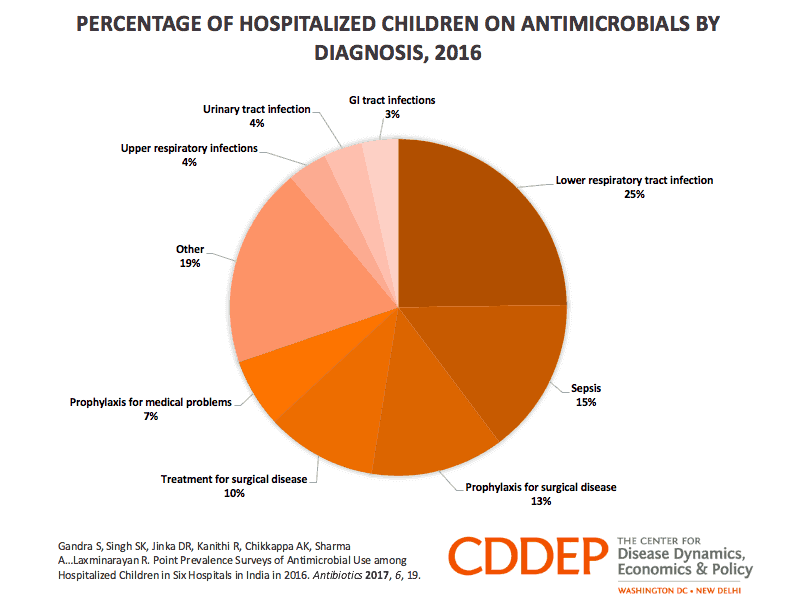November 04, 2019

Multiple cases of colistin-resistant Klebsiella identified in Indian hospital. Researchers identified 22 case patients with colistin-resistant Klebsiella pneumoniae in a hospital in northern India between 2016 and 2017. Of these cases, 45 percent died, 32 percent received colistin prior to resistance detection, and in-hospital transmission may have occurred in 38 percent of cases. The median time between hospital admission and detection of colistin-resistant Klebsiella was 14 days. [Infection Control and Hospital Epidemiology]
Wild poliovirus type 3 eradicated worldwide. Global eradication of wild poliovirus type 3 (WPV3) was declared on World Polio Day, October 24, 2019. WPV3 is the second strain of the virus to be wiped out, following the eradication of wild poliovirus type 2 in 2015. WPV3 was last detected in 2012. This global health milestone denotes a promising step towards complete eradication of the disease. [WHO]
New ADA guideline recommends against using antibiotics for toothaches. Following an expert review of the literature, the American Dental Association (ADA) has released new guidance recommending against the use of antibiotics for toothaches except in patients with systemic involvement (such as fever or swollen lymph nodes). Adults with toothaches should instead seek dental treatment and take over-the-counter pain relievers if needed. [Journal of the American Dental Association]
Multidrug-resistant TB poses increased infection risk for household contacts. Peruvian and US researchers examined the risk of tuberculosis (TB) among household contacts of patients with drug-resistant or drug-susceptible pulmonary TB. The results showed that household contacts exposed to patients with multidrug-resistant TB had an 8 percent increased risk of infection compared to household contacts of patients with drug-sensitive TB. The risk of incident TB disease did not differ among contacts in both groups. The findings highlight the need to develop guidelines targeting diagnostic and therapeutic strategies designed specifically for people already infected with drug-resistant TB. [BMJ]
Non-human reservoirs rarely contribute to resistant E. coli in humans in UK study. Researchers sampled for extended-spectrum β-lactamase-producing Escherichia coli isolates (ESBL-E coli) in human blood and feces, as well as food and veterinary samples between 2013 and 2015 in London, East Anglia, northwest England, Scotland, and Wales to identify common reservoirs of transmission. More than 10 percent of human feces samples and 65 percent of retail chicken samples contained ESBL-E coli. The most common sequence type identified in human samples, ST131, was seldom identified in food and veterinary samples, suggesting that non-human reservoirs only rarely contribute directly to ESBL-E coli in humans. [The Lancet Infectious Diseases]
Antibiotic compound derived from fungus may treat resistant infections. Scientists in Japan derived an antimicrobial compound from a fungus that showed success against fungi and drug-resistant bacteria. Variants of the compound (usharelide) had antifungal properties against Cryptococcus neoformans and Candida albicans, two pathogens that can cause lung infections and yeast infections. The compound also exhibited antimicrobial activity against methicillin-resistant Staphylococcus aureus (MRSA) and vancomycin-resistant enterococci (VRE). [Molecules]
Syringe reuse drives HIV outbreak among children in Pakistani city. Officials believe that syringe reuse is driving the HIV outbreak in Ratodero, Pakistan, which has affected nearly 900 children this year. One pediatrician who allegedly reused syringes was originally blamed for the outbreak in April, but health workers have noted that unhygienic practices are common among many doctors, dentists, and even barbers in the city. One in 200 residents in Ratodero have been infected with HIV since April, although this is thought to be an underestimate. A majority of patients are younger than 12, and many have fevers that are resisting treatment. [NYtimes]
Vaccine protects against oral HPV, which is otherwise prevalent in young women. Among 1,259 sexually active female adolescents who were followed for 10 years, human papillomavirus (HPV) DNA was detected in 6.2 percent of baseline oral rinse samples. Oral HPV detection decreased significantly with time since initial engagement in sexual activity, and oral vaccine-type HPV was significantly lower in vaccinated women (those with at least one dose of the quadrivalent HPV vaccine at study enrollment) compared to unvaccinated women (OR= 0.20). [JAMA Network Open]
Flu vaccine campaign for South African pregnant women would reduce disease and save lives. Using a decision tree model, researchers estimated that an antenatal influenza vaccination campaign that prioritizes HIV-infected over HIV-uninfected pregnant women would avert 9,070 total flu cases, 411 hospitalizations, and 30 deaths among pregnant women and their infants. Without prioritization, the campaign would avert 7,801 flu cases, 335 hospitalizations, and 24 deaths. The prioritized and non-prioritized campaigns would have societal costs of $4,689 and $5,924 per Quality-Adjusted Life Year gained, respectively. [Vaccine]
Lower respiratory tract infections account for large proportion of antimicrobial prescriptions among hospitalized children in India. CDDEP researchers conducted four point prevalence surveys in six hospitals in India between 2016 and 2017. Of the 602 children included in the study, 61.5 percent were prescribed at least one antimicrobial. Lower respiratory tract infections accounted for the biggest proportion of antimicrobial prescriptions, followed by sepsis. [CDDEP]












